In normal times, the news ofa public museum’s acquisition of a masterpiece such as Adolfo Wildt ’s (Milan, 1868 - 1931) Santa Lucia would certainly have had exceptional prominence, but in our contemporary times still grappling with a pandemic, the arrival of a sculpture by one of the most important sculptors of the first half of the 20th century at the Museo Civico Fattori in Livorno risks going unnoticed.
Yet it is an event of national and international appeal for several reasons: first of all, there are not many works by the sculptor in public collections; moreover, the sculpture enters, or rather re-enters, the public patrimony following turbulent events whose outcome seemed by no means a foregone conclusion.
But let us take a step back in time, almost a century later, to 1926, when Milanese sculptor Adolfo Wildt was just under sixty years old and sculpted the first version of Saint Lucy. He would die only five years later, at the end of a long and prolific career.
Of humble beginnings, he learned the rudiments of the heavy and hard work of sculpting as a child, after all, he himself said, “From my childhood when my career was not decided, I had an adoration for marble.” At age eleven he entered the workshop of Giuseppe Grandi, a Scapigliato sculptor and author of the Monument to the Five Days of Milan. He then passed into the workshop of Federico Villa, where he remained for more than four years, and in which he would make all the techniques in working with marble his own. In his early twenties, then, his expertise was in demand by all the major Milanese sculptors, such as Barzaghi, Ripamonti, and Alberti, to name but a few, especially in the finishing phase of the work. Vedova of 1892 is considered his first independent work: a portrait of his wife Dina Borghi resolved into a sculpture with echoes of Canova classicism that, with its intimate metaphysical spirituality, breaks with the verista tradition. From there, the beginning of a fulminating career that would lead him to exhibit far and wide in the world: Milan, Rome, Naples, Munich, Berlin, Brussels, Madrid, Paris, Geneva, Buenos Aires, New York, San Francisco, Washington just to name a few and to obtain important prizes, including that of the Brera Biennial in 1912, the so-called Principe Umberto Prize, and that of the Venice Biennial, ten years later with the work La Famiglia.
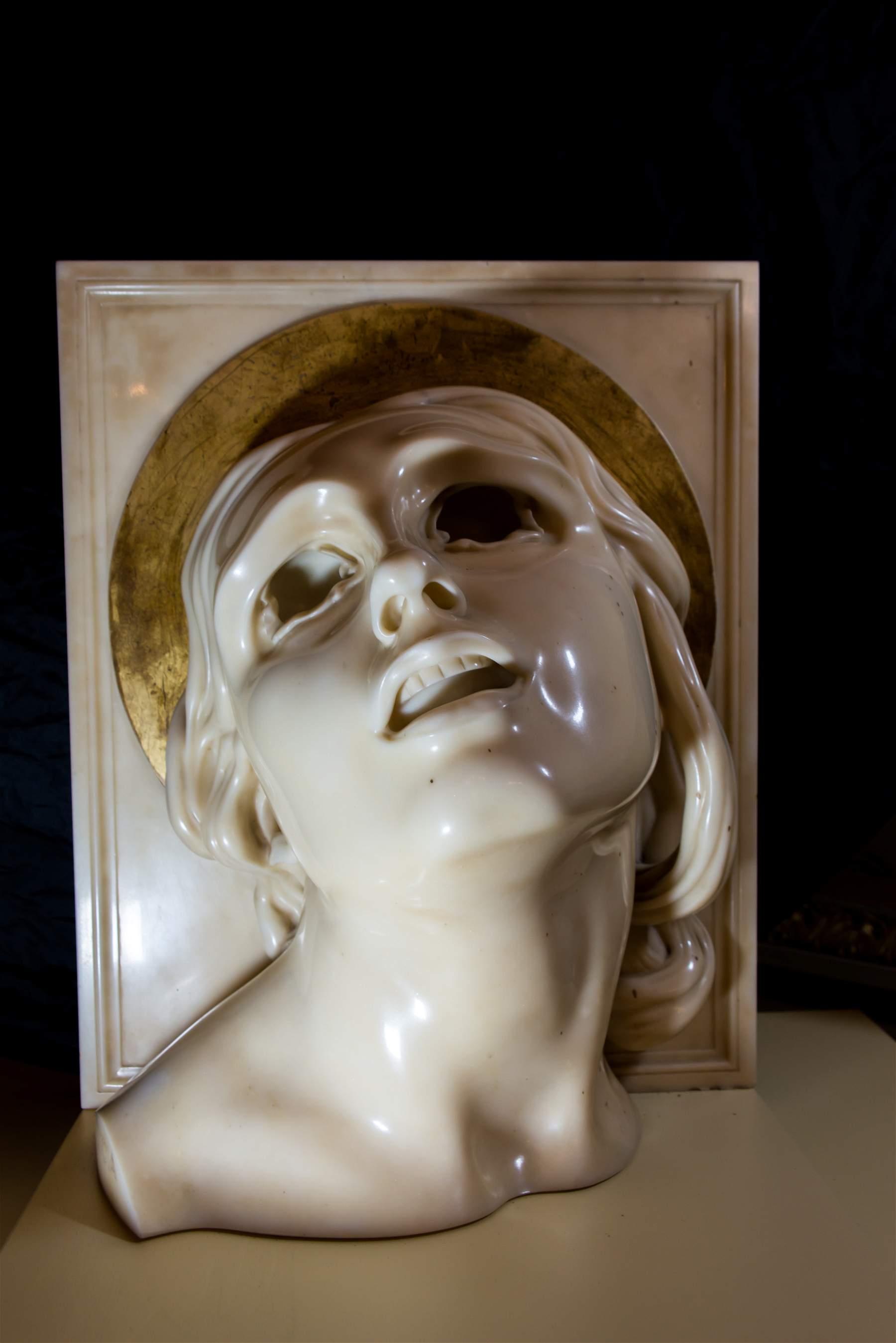 |
| Adolfo Wildt, Santa Lucia (Candoglia marble, 54 x 45 x 32 cm; Livorno, Museo Civico Giovanni Fattori). Photo by Linda Ughi |
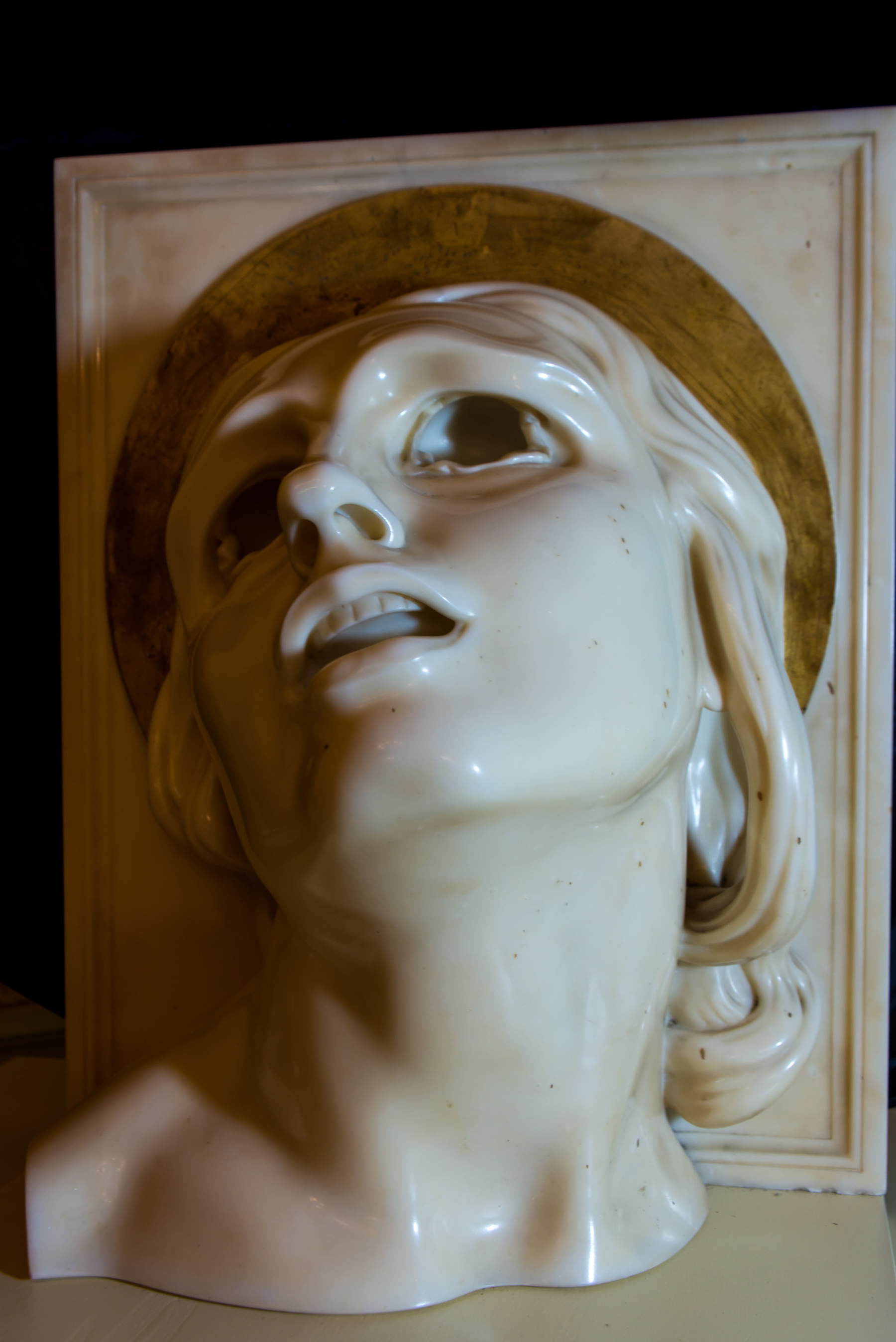 |
| Adolfo Wildt, Santa Lucia, detail. Photo by Linda Ughi |
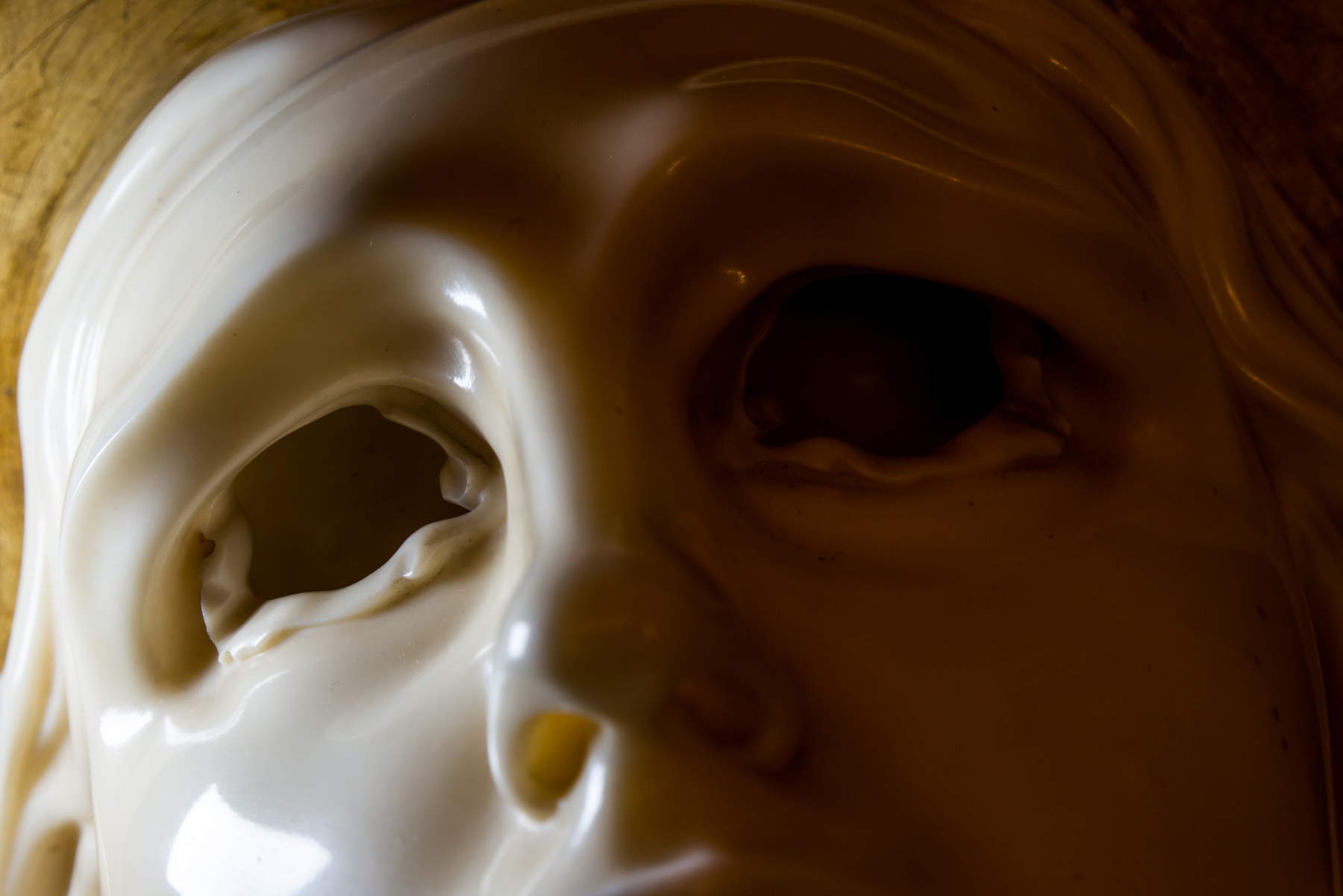 |
| Adolfo Wildt, Santa Lucia, detail. Photo by Linda Ughi |
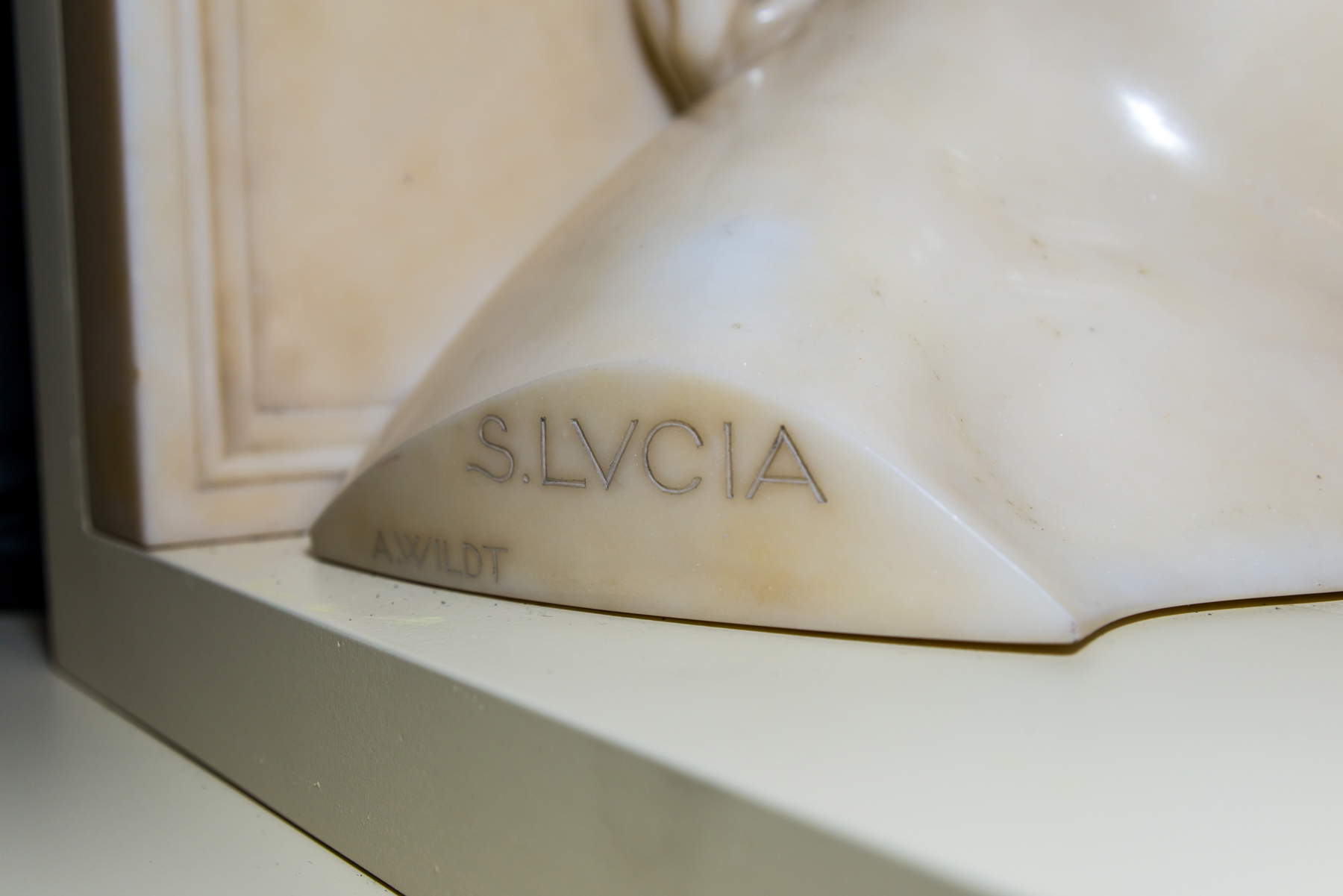 |
| Adolfo Wildt, Santa Lucia, detail. Photo by Linda Ughi |
In 1923 he was granted a professorship at the Brera Academy, and a few years later he was named an Academician of Italy by Mussolini. It was thus at the height of such an intense career that Adolfo Wildt in 1926 created Santa Lucia for Marquis Raniero Paulucci de’ Calboli, his great admirer and collector. The same work in 1931, along with six others by the author, would be donated by the aristocrat to the City of Forlì, and is now on display in the Forlì Civic Museum at Palazzo Romagnoli. Adolfo Wildt made at least two other versions of this work: one is in the Gilgore collection in Naples, Florida, and the other is the one in Livorno-their dates are unknown. Although it is unclear in which version Saint Lucia first appeared, it was shown in several exhibitions while the artist was still alive, such as: in Milan in 1928, 1929 and 1930, in Oslo in 1929, in Livorno in 1930, and in Rome in 1931 for the first Quadriennale.
Little else is currently known about the version of the work that will return to Livorno, except that at least since the 1980s it has been displayed in a waiting room as a very common knick-knack on the premises of an ASL district in Livorno, where both the author and the value of the work were ignored. But when and where it was acquired is unclear: is it perhaps the work that was exhibited at the Bottega d’Arte in Livorno in 1930, or, as some would suggest, is it a later work? The importance of the forgotten work was noticed by some experts, including collector Carlo Pepi, and this information also reached the Livorno Territorial Section of the Italian Union of the Blind and Visually Impaired, which had its headquarters on those premises. Apparently in good faith, believing it to be the owner, the Territorial Section of the Union of the Blind decided to sell the work in 2015 to raise funds for its solidarity activities.
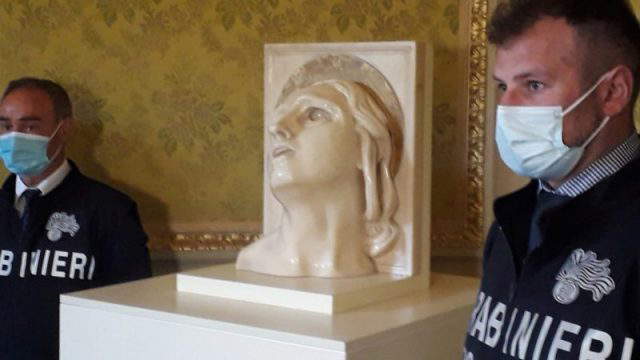 |
| Wildt’s Saint Lucy at the Fattori Museum in Livorno: the unveiling of the statue by the forces of law and order. |
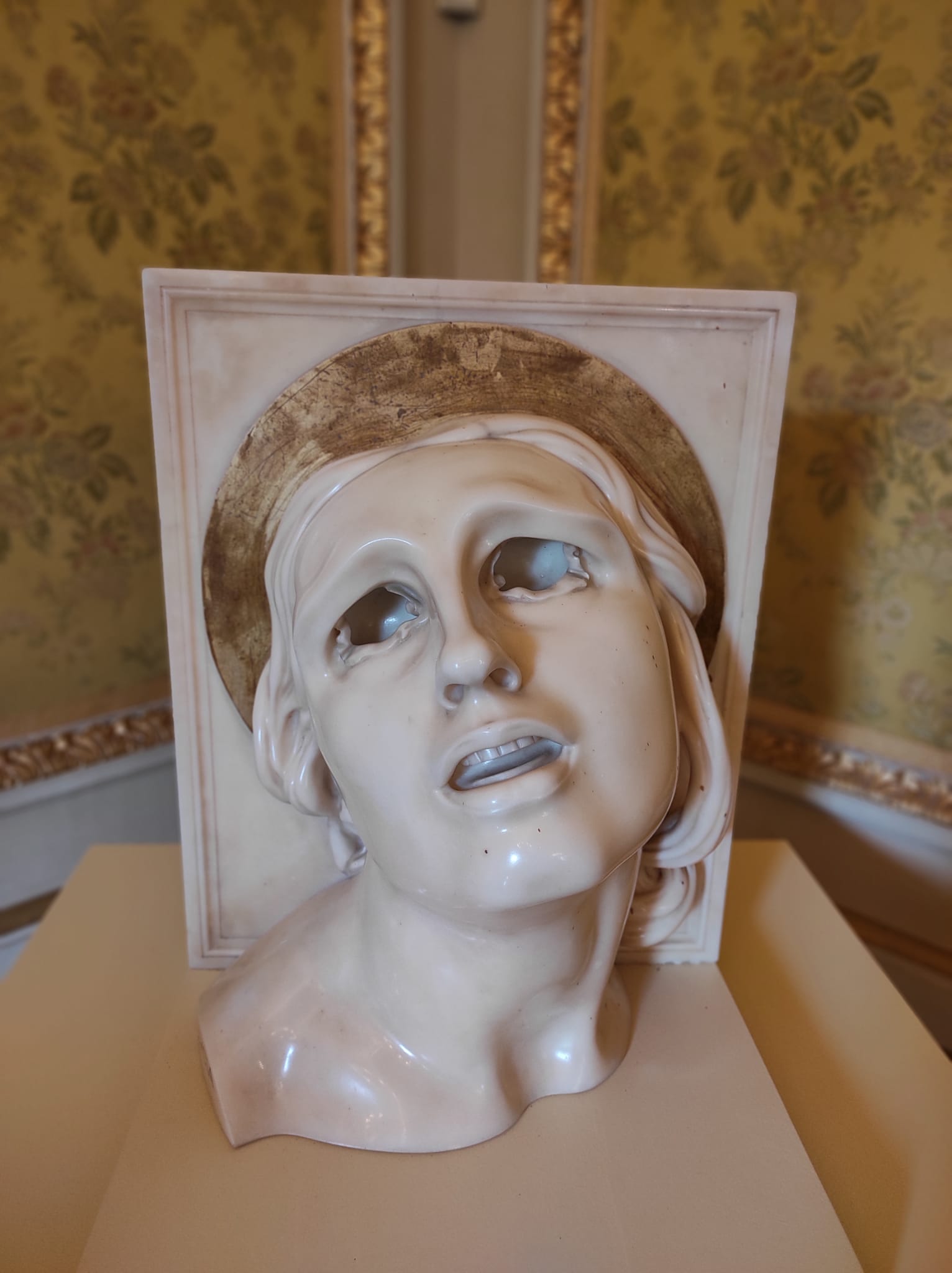 |
| Wildt’s Saint Lucia at the Fattori Museum in Livorno. |
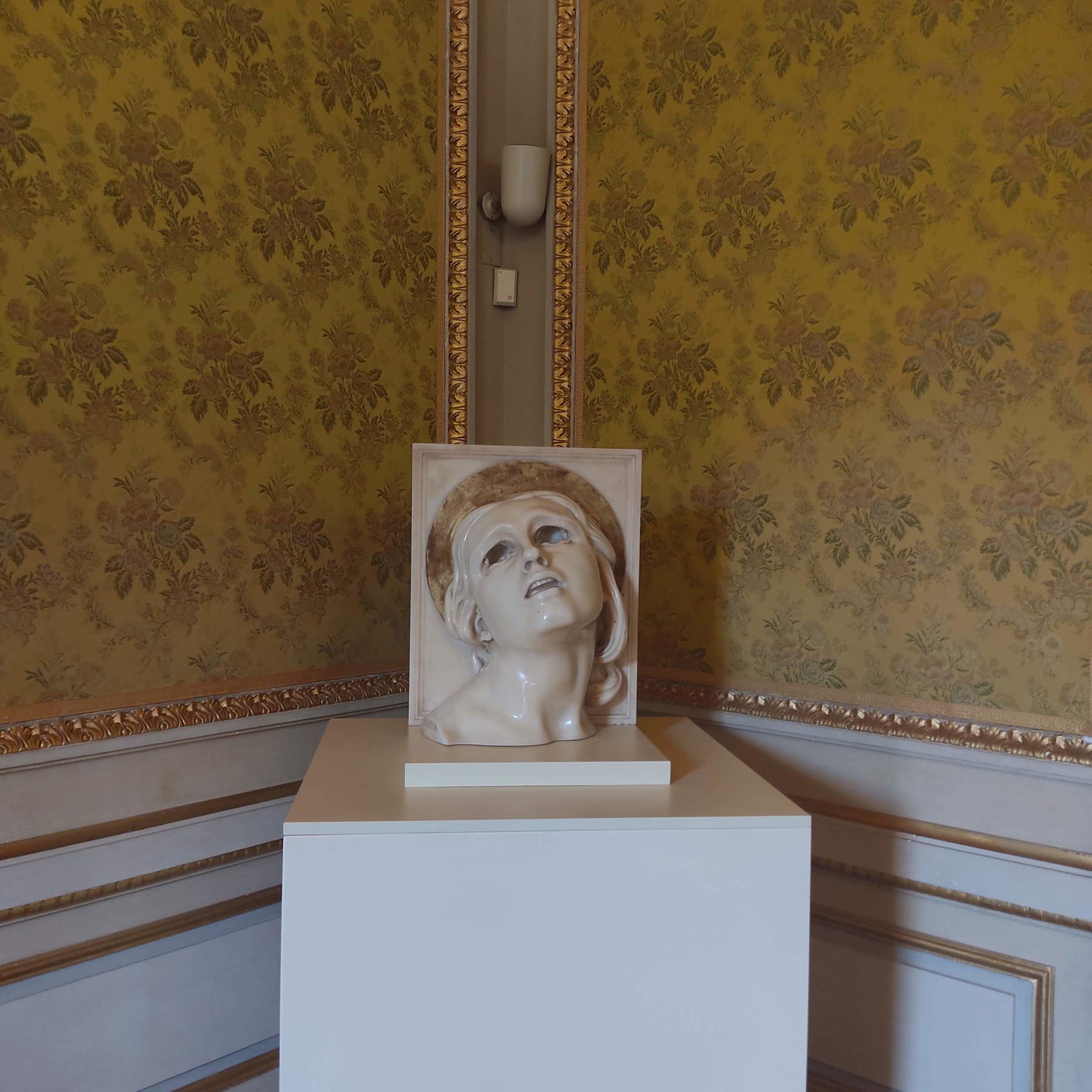 |
| Wildt’s Saint Lucy at the Fattori Museum in Livorno. |
It was only with considerable delay that authorities and public opinion became aware of the work’s disappearance from its location, but by then it was too late. In fact, with the permission of the Superintendency of Genoa, the sculpture was transferred to London, where it was sold by Sotheby’s auction house in 2015 as the auction’s most important lot for the sum of 485,000 pounds (666,000 euros).
This opened a dispute in the Civil Court, with the latter called to ascertain the ownership of the bust, between the ASL and the Blind Union. The Carabinieri of the Artistic Heritage Protection Unit in Florence, with the help of the auction house, managed to recover the work to make it available to the Judicial Authority, which then recognized the ASL as the legitimate owner. The affair ended with ASL and the Union reaching an agreement, while the G.I.P. of the Criminal Court of Livorno eventually dismissed the proceedings, ruling out the presence of facts of criminal relevance. The ASL subsequently resolved to donate the work to the Municipality of Livorno.
The affair thus comes to a positive conclusion, with the work delivered to the Giovanni Fattori Civic Museum. Here, the work will be able to dialogue with artists who, in different forms, shared with Wildt an interest in an art with a Symbolist bent: among them, Plinio Nomellini, Benvenuto Benvenuti and Vittore Grubicy De Dragon, of whom, moreover, Wildt was a great friend. This will be an opportunity to get a close look at Adolfo Wildt’s extraordinary work, which Sotheby’s had defined as the sculptor’s signature image.
Wildt’s Saint Lucy is a work conceived as a high relief where the bust of the saint is placed on a backdrop bearing the golden nimbus. The sculpture exemplifies Wildt’s investigations, suspended between a simplification of forms tending almost toward abstraction and the exasperation of emotions, with references to Italian masters of the past. Wildt’s work confronts the Baroque at a time when it was being rediscovered in Italy through major exhibitions and studies. Wildt clearly thinks back to theEcstasy of St. Teresaadi Gian Lorenzo Bernini, but also capitalizing on influences drawn from Hellenistic art, such as the Laocoon or the Belvedere Torso. Bernini’s patheticism is powerfully reinterpreted through the extreme polish and shine of the surfaces, which contrasts with the absolute emptiness of the eye sockets with which the attribute of the saint’s martyrdom is meant to be rendered. The blind face of the saint turns to heaven, while the mouth seems to hold the secret of a sigh that stifles a cry of terror and transforms it into a groan. The woman treated with a cruel sincerity “to the point of risking falling into the macabre,” as Cozzani wrote of her, oscillates between the horrific and the sensual, between death and life, between the sacred and the profane in a multitude of reading planes typical of many Symbolist works.
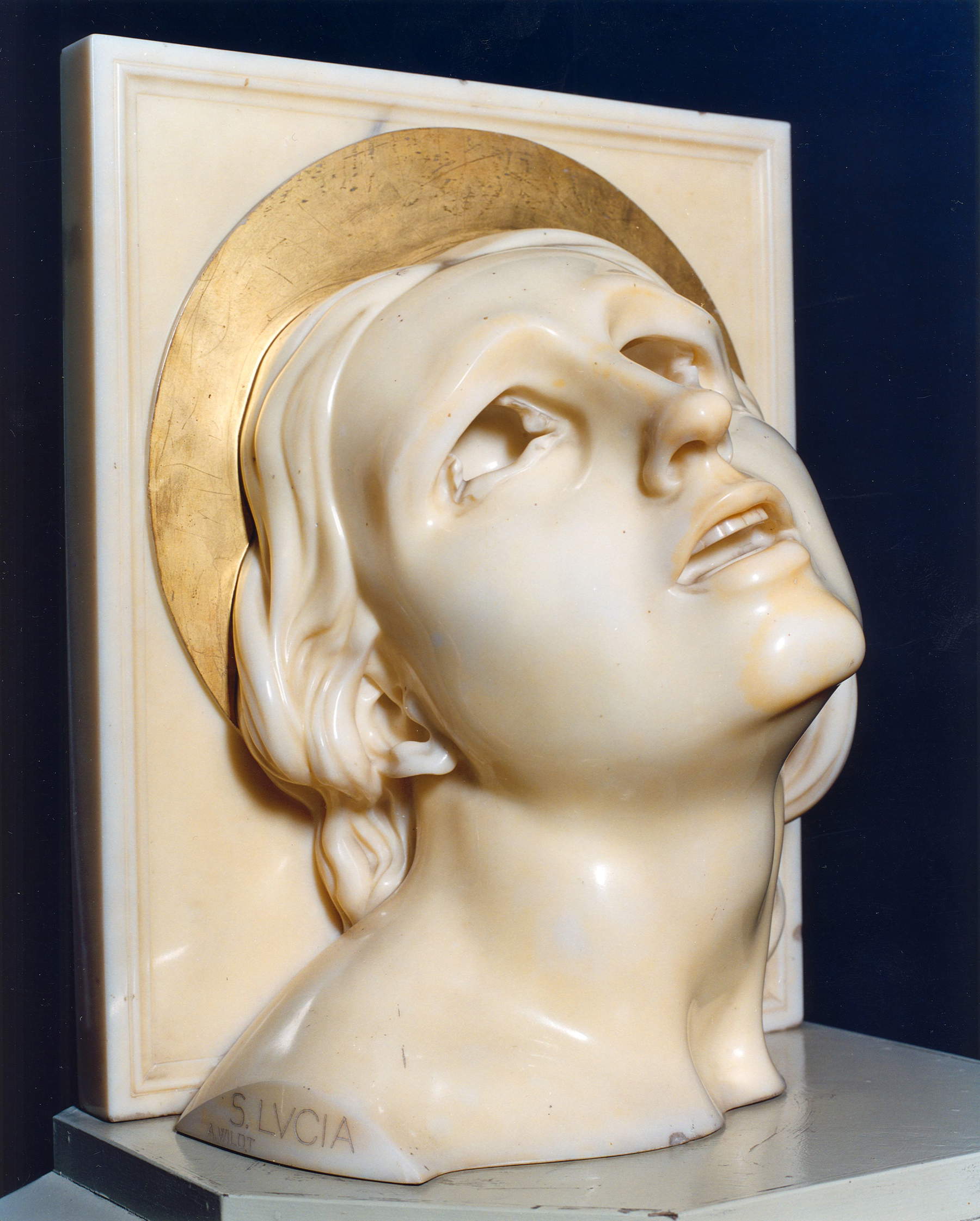 |
| Adolfo Wildt, Santa Lucia (1926; Candoglia marble; Forlì, Palazzo Romagnoli) |
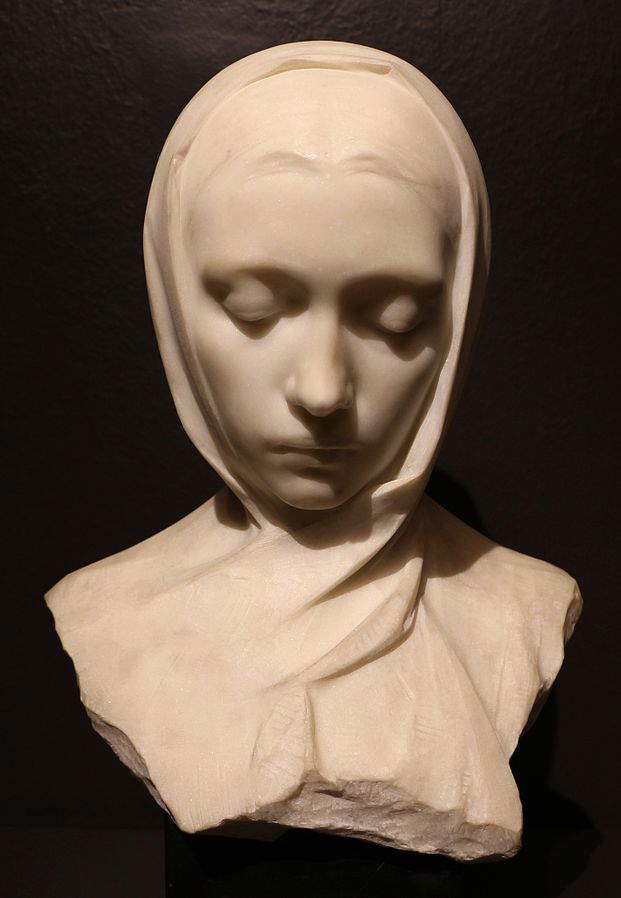 |
| Adolfo Wildt, Vedova (1893-94; Carrara marble, 42 x 31 x 23 cm; Rome, National Gallery of Modern and Contemporary Art) |
The qualities of the work reaffirm the exceptional nature of the exhibition in Livorno, related to the fortunate events that allowed it to return to Italy in a public collection, where it can be enhanced by a prestigious collection and in turn enhance it by going on to weave a series of dialogues and interrelationships with the other works on display.
The handover of Adolfo Wildt’s work to the Giovanni Fattori Civic Museum in Livorno took place in an inaugural ceremony on June 7. The work was returned by Capt. Claudio Mauti, commander of the Carabinieri Nucleo per la Tutela del Patrimonio Culturale di Firenze (TPC) to the Azienda Sanitaria Locale Toscana Nord Ovest. In attendance were Leghorn Mayor Luca Salvetti, Councilor for Culture Simone Lenzi, and Dr. Maria Letizia Casani, director general of the Health Authority. Other works delivered to the Livorno museum by the Carabinieri Unit were also presented during the ceremony, these being the wooden sculpture the Swimmer by Umberto Bartoli and also six canvases seized in February 2014 during the activities that led to the discovery of important works of art removed from the San Matteo Museum in Pisa. These are paintings executed between the 17th and 20th centuries, by an unknown author, depicting religious subjects. The work will be on view at the Fattori Museum from June 8, and for the occasion from June 8 to 13 on the social profiles of the Fattori Civic Museum and on Adolfo Wildt and Sculpture, a page with a national and international following, which for years has been involved in popularizing the author’s work, will be hosted in-depth articles and curiosities dedicated to the author and the work. This is an opportunity not to be missed to rediscover a masterpiece of Italian sculpture that has been forgotten for too long.
Warning: the translation into English of the original Italian article was created using automatic tools. We undertake to review all articles, but we do not guarantee the total absence of inaccuracies in the translation due to the program. You can find the original by clicking on the ITA button. If you find any mistake,please contact us.